昨天重装了一下e2_studio,结果Renesas_Flash_Programmer死活装不上了,安装时提示已经安装,注册表也有一万个安装,删也删不完。考虑还是用回到MDK。参照@ jf_92517703大佬的作品,我这里重新写了一遍printf。
这里配置用SCI9来做debug,这样就不用外接uatr转TTL了。
1、先配置systemDBUG,这样才可以选择SCI9
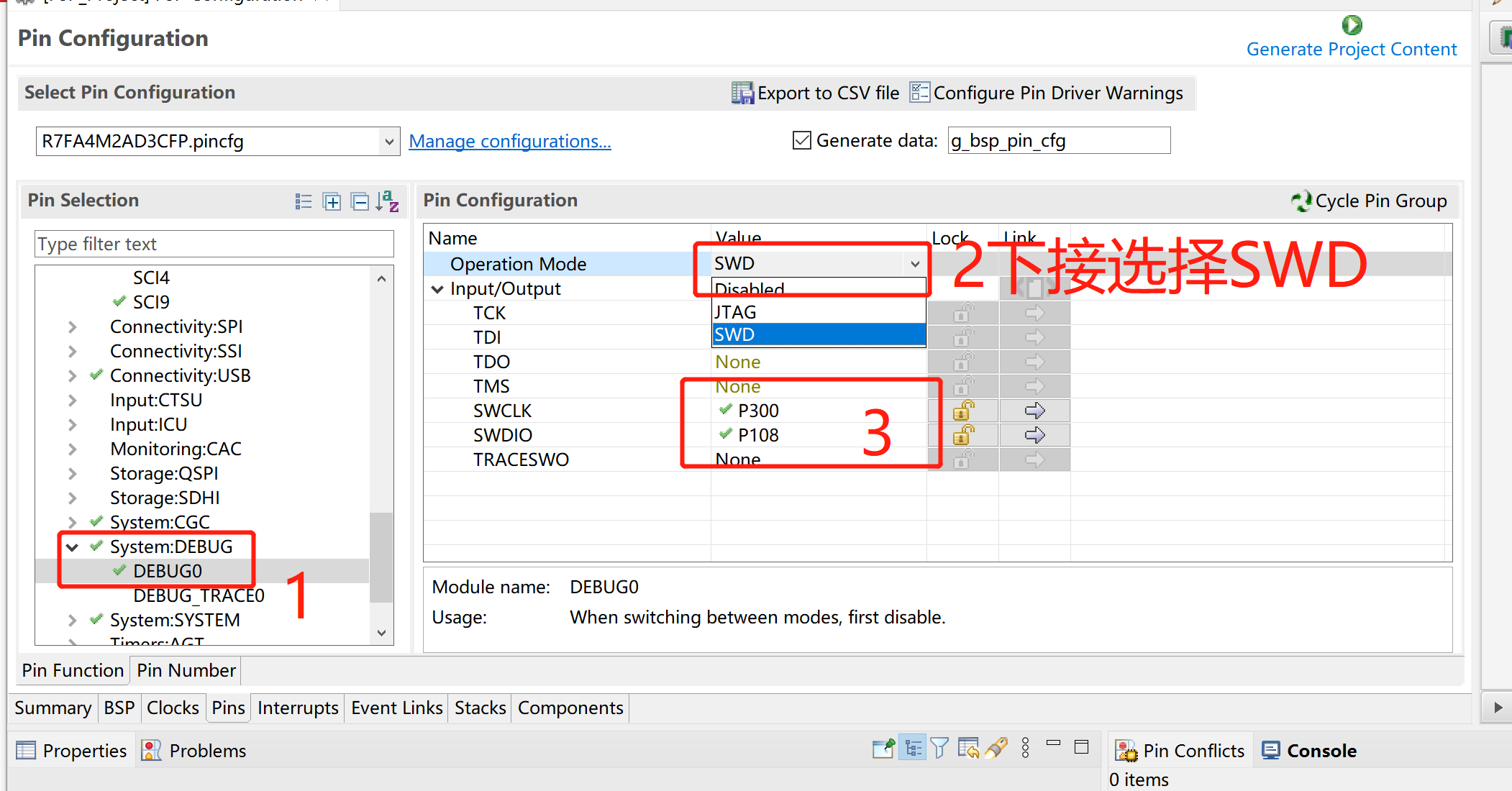
2、SCI9选择如下图:

3、Stack启用UART
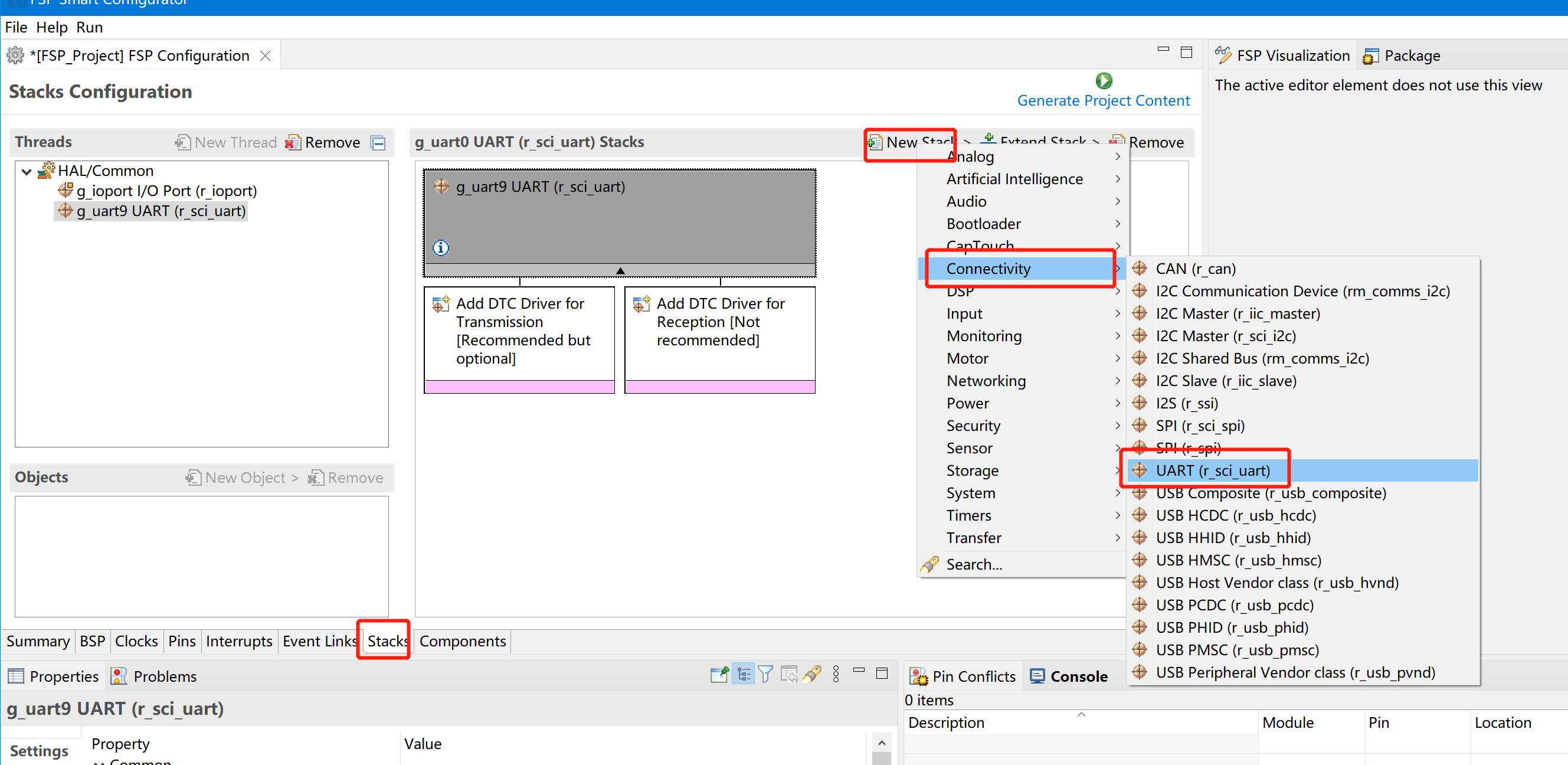
4、修改通道数、回调函数:

5、选择PIN为输出到板载的CH340G

6、最后生成keil工程后,找到目录,打开工程:
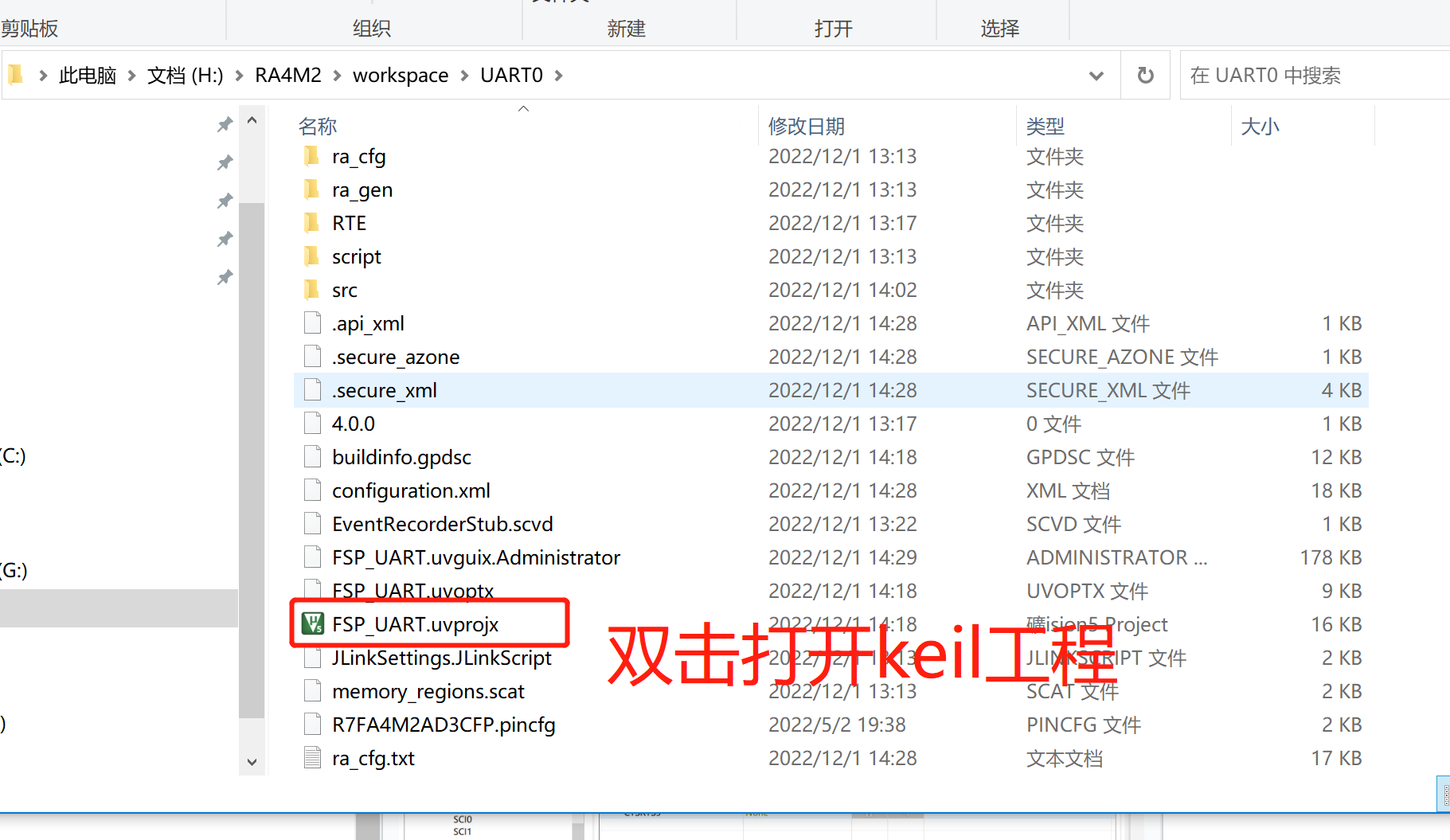
7、新建bsp_debug_uart.c、bsp_debug_uart.h(大部分是抄@ jf_92517703)部分做了修改:
bsp_debug_uart.c:
#include "bsp_debug_uart.h"
void bsp_uart_init(void)
{
fsp_err_t err = FSP_SUCCESS;
err = R_SCI_UART_Open (&g_uart9_ctrl, &g_uart9_cfg);
assert(FSP_SUCCESS == err);
}
volatile bool uart_send_complete_flag = false;
void user_uart_callback (uart_callback_args_t * p_args)
{
switch (p_args->event)
{
case UART_EVENT_RX_CHAR:
{
R_SCI_UART_Write(&g_uart9_ctrl, (uint8_t *)&(p_args->data), 1);
break;
}
case UART_EVENT_TX_COMPLETE:
{
uart_send_complete_flag = true;
break;
}
default:
break;
}
}
#if defined __GNUC__ && !defined __clang__
int _write(int fd, char *pBuffer, int size);
int _write(int fd, char *pBuffer, int size)
{
(void)fd;
R_SCI_UART_Write(&g_uart0_ctrl, (uint8_t *)pBuffer, (uint32_t)size);
while(uart_send_complete_flag == false);
uart_send_complete_flag = false;
return size;
}
#else
int fputc(int ch, FILE *f)
{
(void)f;
R_SCI_UART_Write(&g_uart9_ctrl, (uint8_t *)&ch, 1);
while(uart_send_complete_flag == false);
uart_send_complete_flag = false;
return ch;
}
#endif
bsp_debug_uart.h
#ifndef __BSP_UART_H__
#define __BSP_UART_H__
#include "hal_data.h"
#include "stdio.h"
void bsp_uart_init(void);
#endif
8、然后在keil下新建目录user,并把bsp_debug_uart.c加进去:
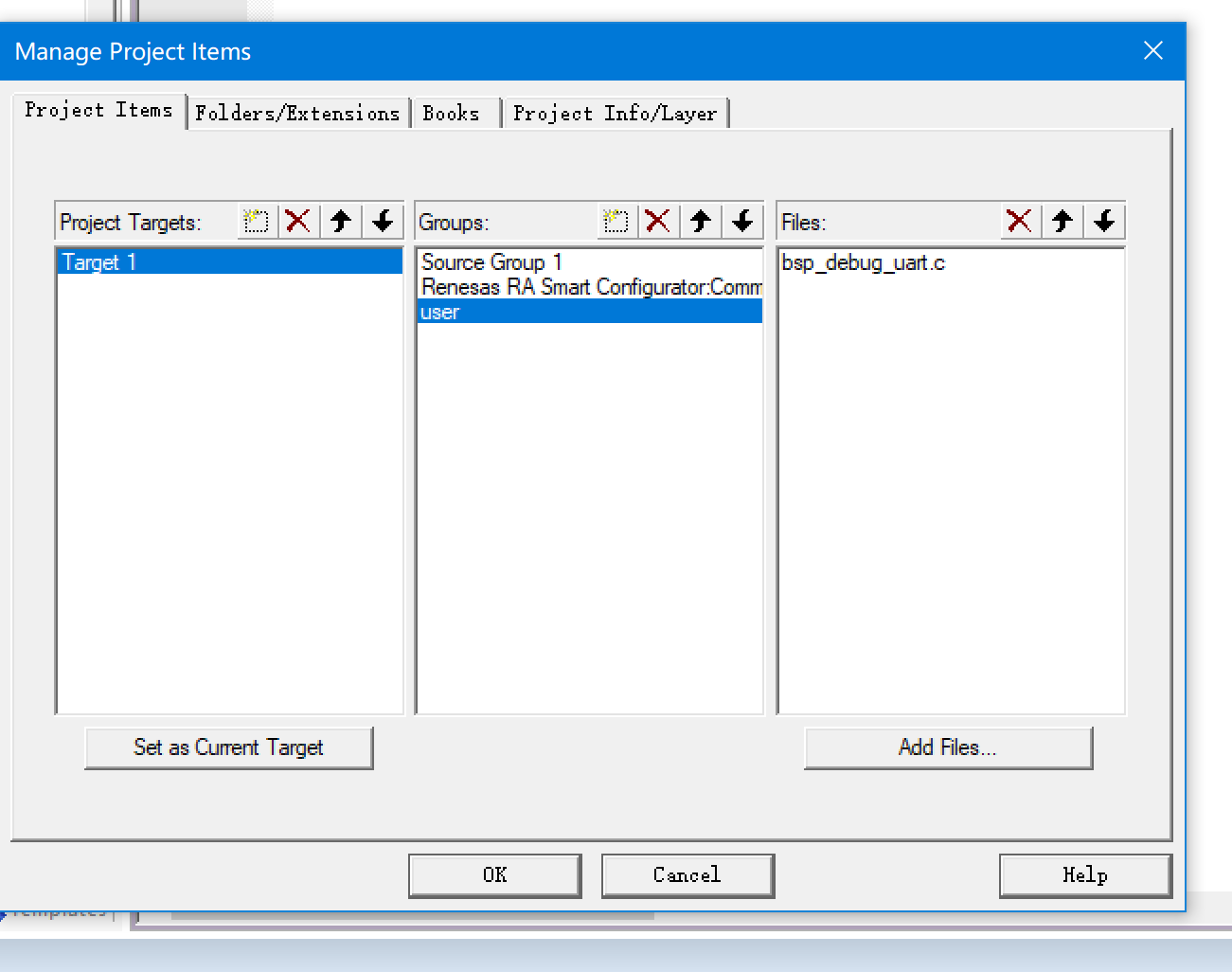
9、hal_enty.c主程序如下:
#include "hal_data.h"
#include <stdio.h>
#include "bsp_debug_uart.h"
FSP_CPP_HEADER
void R_BSP_WarmStart(bsp_warm_start_event_t event);
FSP_CPP_FOOTER
/*******************************************************************************************************************//**
* main() is generated by the RA Configuration editor and is used to generate threads if an RTOS is used. This function
* is called by main() when no RTOS is used.
**********************************************************************************************************************/
void hal_entry(void)
{
bsp_uart_init();
char char_i[]="hello e2studio";
int int_i=55;
float float_i=66.20f;
printf("hello RA4\r\n");
while(1)
{
printf("int_i=%d\n",int_i);
printf("float_i=%.2f\n",float_i);
printf("char_i='%s'\n",char_i);
R_BSP_SoftwareDelay(1000, BSP_DELAY_UNITS_MILLISECONDS);
// NOLINT100->160
}
#if BSP_TZ_SECURE_BUILD
/* Enter non-secure code */
R_BSP_NonSecureEnter();
#endif
}
/*******************************************************************************************************************//**
* This function is called at various points during the startup process. This implementation uses the event that is
* called right before main() to set up the pins.
*
* @param[in] event Where at in the start up process the code is currently at
**********************************************************************************************************************/
void R_BSP_WarmStart (bsp_warm_start_event_t event)
{
if (BSP_WARM_START_RESET == event)
{
#if BSP_FEATURE_FLASH_LP_VERSION != 0
/* Enable reading from data flash. */
R_FACI_LP->DFLCTL = 1U;
/* Would normally have to wait tDSTOP(6us) for data flash recovery. Placing the enable here, before clock and
* C runtime initialization, should negate the need for a delay since the initialization will typically take more than 6us. */
#endif
}
if (BSP_WARM_START_POST_C == event)
{
/* C runtime environment and system clocks are setup. */
/* Configure pins. */
R_IOPORT_Open(&g_ioport_ctrl, g_ioport.p_cfg);
}
}
#if BSP_TZ_SECURE_BUILD
BSP_CMSE_NONSECURE_ENTRY void template_nonsecure_callable ();
/* Trustzone Secure Projects require at least one nonsecure callable function in order to build (Remove this if it is not required to build). */
BSP_CMSE_NONSECURE_ENTRY void template_nonsecure_callable ()
{
}
#endif
10、接DAPlink接到SWD、SCK接品上,下载程序就可以了,运行效果如图:
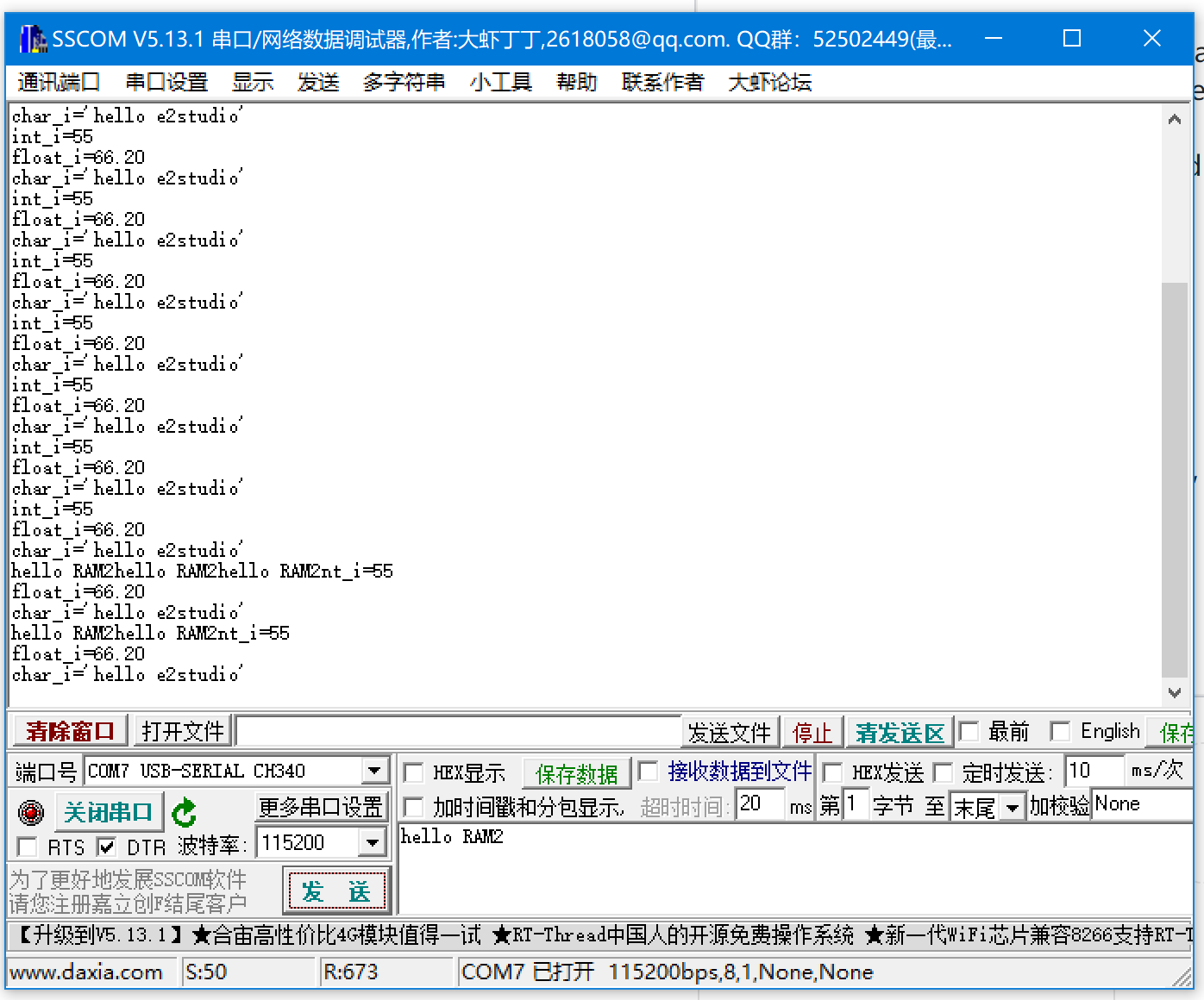
【感受】由于没有钱买jlink10,还是用Keil+DAPlink比较好。学习了前面大佬的作品,自己才能入门。
 /9
/9 